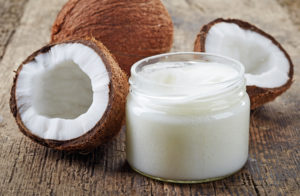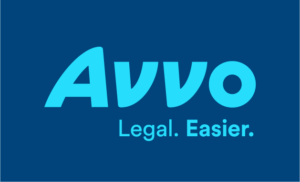** What are Courts Making of the Plentiful Health Claims Made About Coconut Oil? **
By: Brent E. Johnson

Coconut products are taking an increasingly prominent place in the health food aisles – the shelves are stocked with everything from coconut water to coconut milk to coconut flour. In particular, the last decade has seen the re-emergence of coconut oil (helped by a platoon of celebrity endorsers) as a health food staple. Many marketers have touted coconut oil as a “healthy alternative” to other types of cooking oils. Litigation relating to coconut oil health claims has followed in the last twelve months. The claims made in such lawsuits follow two main themes. First, that coconut oil is inherently unhealthy – and to advertise otherwise is misleading. And second, that health claims made with respect to coconut oil violate specific FDA regulations regarding the term “healthy.”
As to the first claim, it is not particularly controversial that low density lipoproteins (LDL) cholesterol — the so called “bad” cholesterol — contributes to fatty buildup in arteries raising the risk for heart attack, stroke and peripheral artery disease. There also appears to be no question that saturated fats cause the human body to produce excess LDL’s – and that coconut oil is about 90% saturated fat (which is a higher percentage than butter (about 64% saturated fat), beef fat (40%), or even lard (also 40%)). What is unclear is whether all saturated fats are equally “bad” – as some studies suggest that coconut oil’s particular type of saturated fat (medium-chain triglycerides (MCTs)) actually aids in weight loss and helps lower blood cholesterol levels. The science behind these benefits is unsettled.
As to the second question, FDA regulates “nutrient content claim[s].” As we have blogged about in the past, in order to “use the term ‘healthy’ or related words (e.g., ‘health,’ ‘healthful,’ ‘healthfully,’ ‘healthfulness,’ ‘healthier,’ ‘healthiest,’ ‘healthily,’ and ‘healthiness’)” as nutrient content claims, the food must satisfy specific “conditions for fat, saturated fat, cholesterol, and other nutrients.” 21 C.F.R § 101.65(d)(2). Specifically, under 21 C.F.R. § 101.65(d)(2)(i)(F), to make a “healthy” claim, the food must (1) be “’Low fat’ as defined in § 101.62(b)(2),” (2) be “’Low [in] saturated fat’ as defined in § 101.62(c)(2),” and (3) contain “[a]t least 10 percent of the RDI or the DRV per RA of one or more of vitamin A, vitamin C, calcium, iron, protein or fiber.” See 21 C.F.R. § 101.65(d)(2)(i)(F). Section 101.62(b)(2)(i)(B) provides the applicable definition of “low fat” for coconut oil products because it has a “Reference Amount Customarily Consumed” (RACC) of less than 30 grams. Under § 101.62(b)(2)(i)(B)’s definition, a food is low fat only if it “contains 3 g or less of fat per reference amount customarily consumed and per 50 g of food.” Under 21 C.F.R. § 101.62(c)(2), a food is “low saturated fat” only if it “contains 1 g or less of saturated fatty acids per (RACC) and not more than 15 percent of calories from saturated fatty acids.” There is very little argument that coconut oil does not meets these metrics. It is not low in fat or low in saturated fat under the FDA’s definitions. But is a general claim of healthfulness on a label a claim about its “nutrient content” – or is it a more generic statement regarding the product overall?
These claims have been made numerous times in recent class actions against coconut oil companies. The facts are not always identical — in some cases the product’s label explicitly states the product is “healthy,” in others the labels use more diffuse terms such that the product is a “superfood” or “nutritious,” and in other cases “healthfulness” is implied by the context of the advertising as a whole. In any case, to date no court has adjudicated the underlying questions raised. The first set of questions revolve around the issue of whether or not coconut oil’s saturated fats are inherently unhealthful? In answering that question, what does “healthy” even mean in the context of cooking oil? Does it mean that there is a complete absence of anything harmful? Does it mean that it is going to make you live longer – or just that it is not going to kill you? Or somewhere in between? Does context play a part here? Would a consumer be cognizant that fats, such as oils, may be healthy in limited ways, but are not if consumed in certain forms or in certain quantities? Is advertising healthy cooking oil different, say, to advertising healthy vitamin supplements? The second unresolved issue is whether claims made on a label about health benefits “nutrition” claims as that term is used in FDA regulations? In Hunter v. Nature’s Way Prod., LLC, No. 16CV532-WQH-BLM, 2016 WL 4262188, at *1 (S.D. Cal. Aug. 12, 2016), the District Court held that these questions could not be definitively answered by defendants on a motion to dismiss and so the case has continued to the class certification stage. The District Court in Jones v. Nutiva, Inc., No. 16-CV-00711-HSG (KAW), 2016 WL 5387760 (N.D. Cal. Aug. 23, 2017), held the same, noting that concepts like “health” and “nutrition” are “difficult to measure concretely” but that the court would not “give the defendant the benefit of the doubt by dismissing the statement as puffery” when the context of the advertising and labeling plays into the analysis of the health claims. This case is also headed towards a certification decision with a motion hearing set for early 2018. Likely, these same questions will raise their heads again on certification briefing, i.e., Is “healthfulness” such an amorphous concept that there is no commonality amongst the class?
In Zemola v. Carrington Tea Co., No. 3:17-cv-00760 (S.D. Cal), defendants have taken a different tact – they have moved for a primary jurisdiction stay of their case based on the pending FDA regulatory proceedings to redefine the term “healthy” in the labeling of food products. As discussed in a prior post, in September 2016, FDA issued a guidance document (Guidance for Industry: Use of the Term “Healthy” in the Labeling of Human Food Products) stating that FDA does not intend to enforce the regulatory requirements for products that use the term healthy if the food is not low in total fat, but has a fat profile makeup of predominantly mono and polyunsaturated fats. FDA also requested public comment on the “Use of the Term “Healthy” in the Labeling of Human Food Products.” Comments were received from consumers and industry stakeholders, reaching 1,100 before the period closed on April 26, 2017. FDA has not provided a timeline as to when revisions to the definition of “healthy” might occur following these public comments. The Zemola Court has yet to rule on the request for a stay.
A number of coconut oil cases have settled. See James Boswell et al. v. Costco Wholesale Corp., No. 8:16-cv-00278 (C.D. Cal) ($775,000 coconut oil settlement based on “healthy” labelling); Christine Cumming v. BetterBody Food & Nutrition LLC, Case No. 37-2016-00019510-CU-BT-CTL (San Diego Sup. Ct) ($1 million settlement).




 ** Do we have a new “sue-me” State for Food and Class Litigators? **
** Do we have a new “sue-me” State for Food and Class Litigators? **
 We have blogged in the past about some of the “usual suspects” in the consumer class action line-up – particularly for food, beverage, cosmetics and related industries – for example, the
We have blogged in the past about some of the “usual suspects” in the consumer class action line-up – particularly for food, beverage, cosmetics and related industries – for example, the  Bucking the popular notion that the legal system protects its own – a recent putative class action in Illinois bought by and for a class of lawyers – failed. Vrdolyak v. Avvo, Inc., No. 16 C 2833, 2016 WL 4765716, at *1 (N.D. Ill. Sept. 12, 2016). The defendant in the lawsuit,
Bucking the popular notion that the legal system protects its own – a recent putative class action in Illinois bought by and for a class of lawyers – failed. Vrdolyak v. Avvo, Inc., No. 16 C 2833, 2016 WL 4765716, at *1 (N.D. Ill. Sept. 12, 2016). The defendant in the lawsuit,